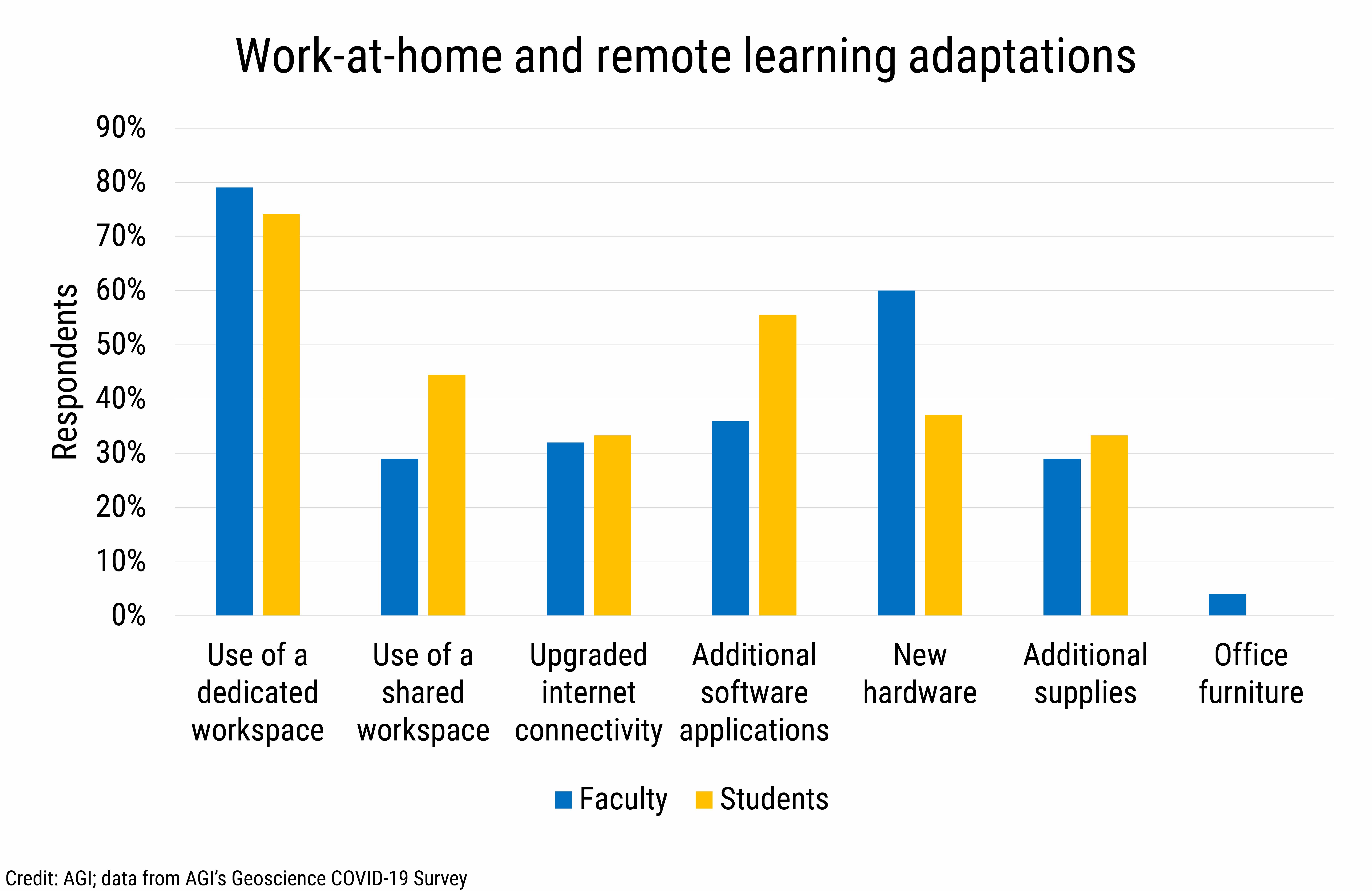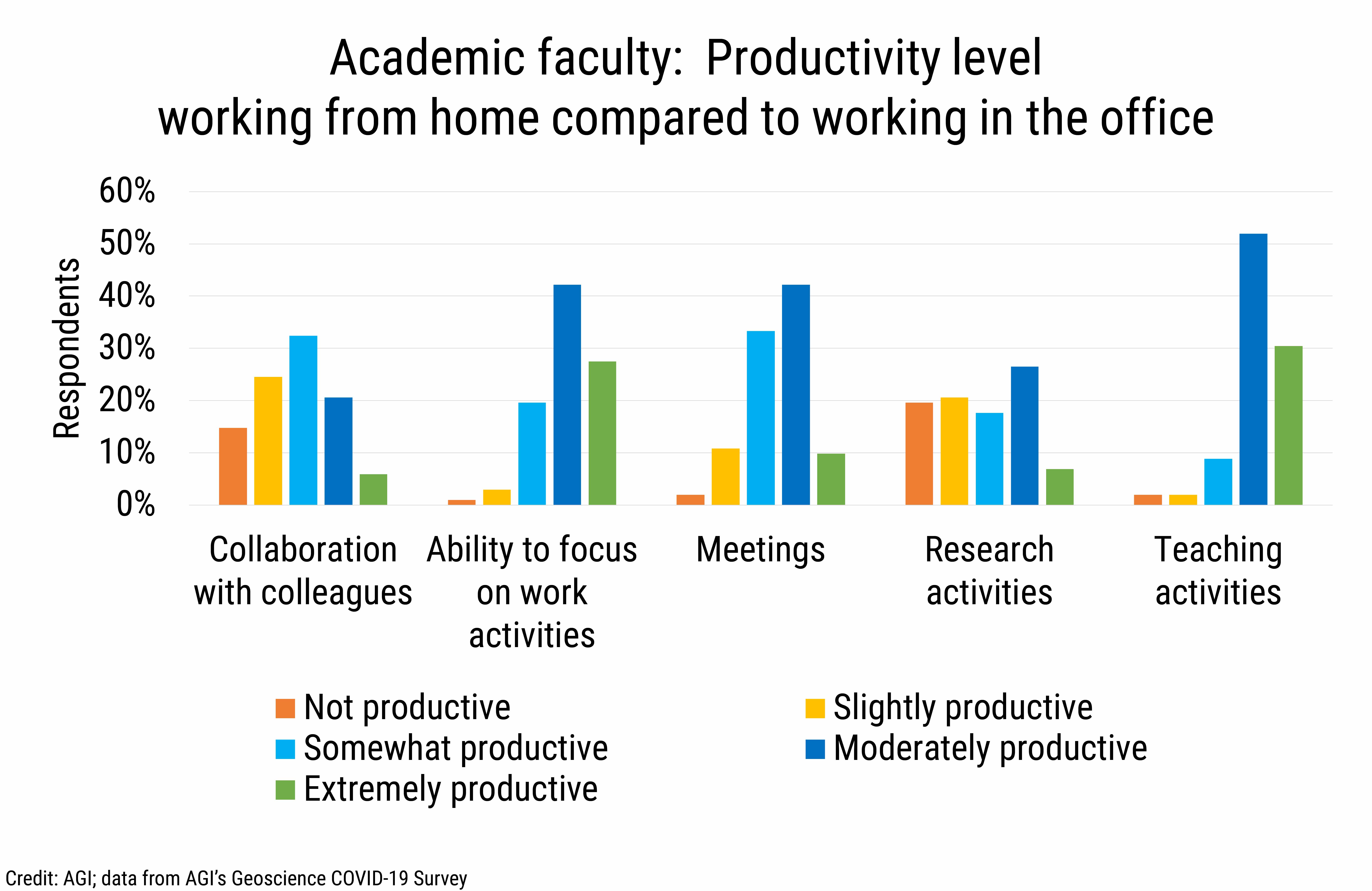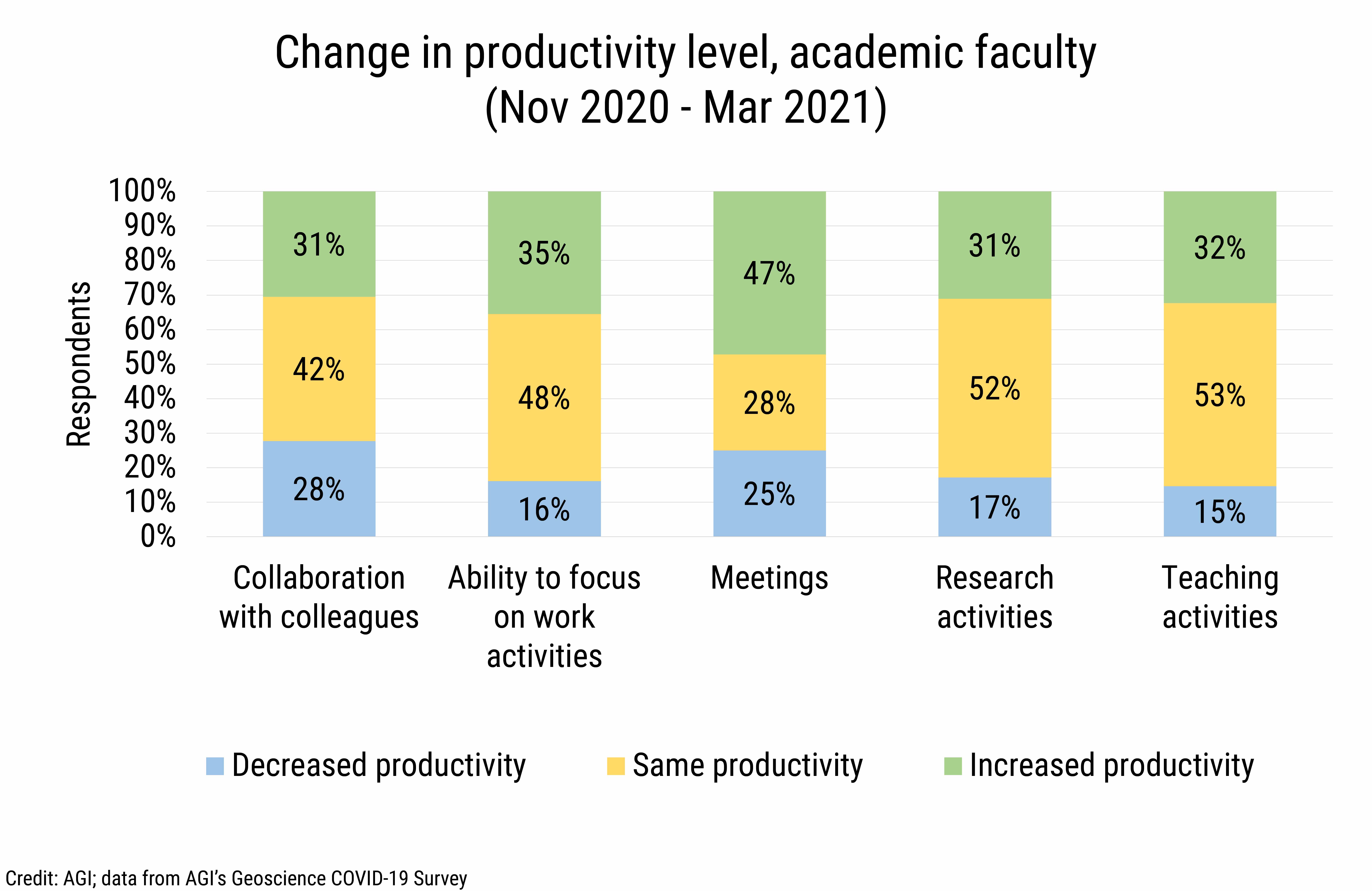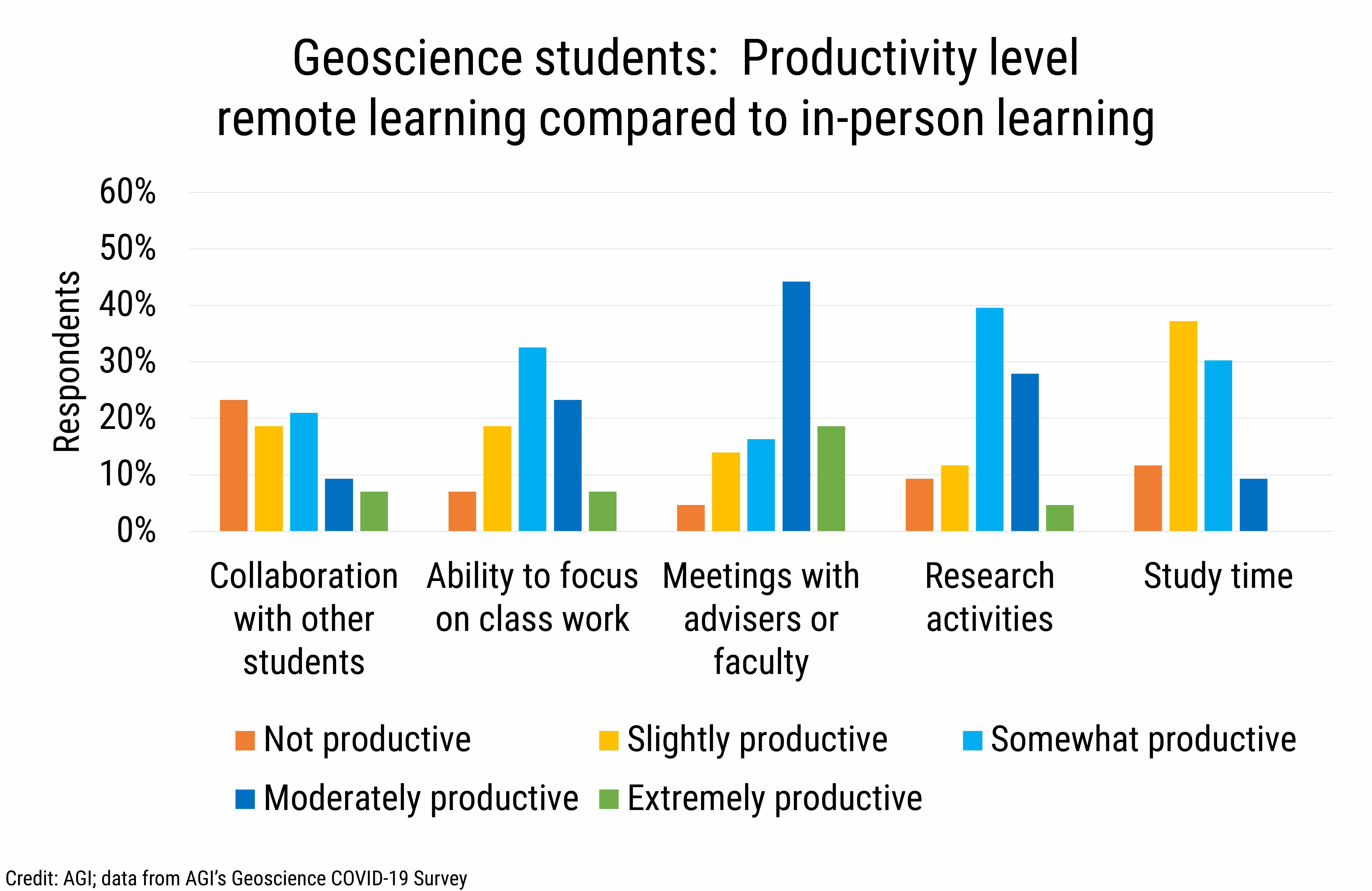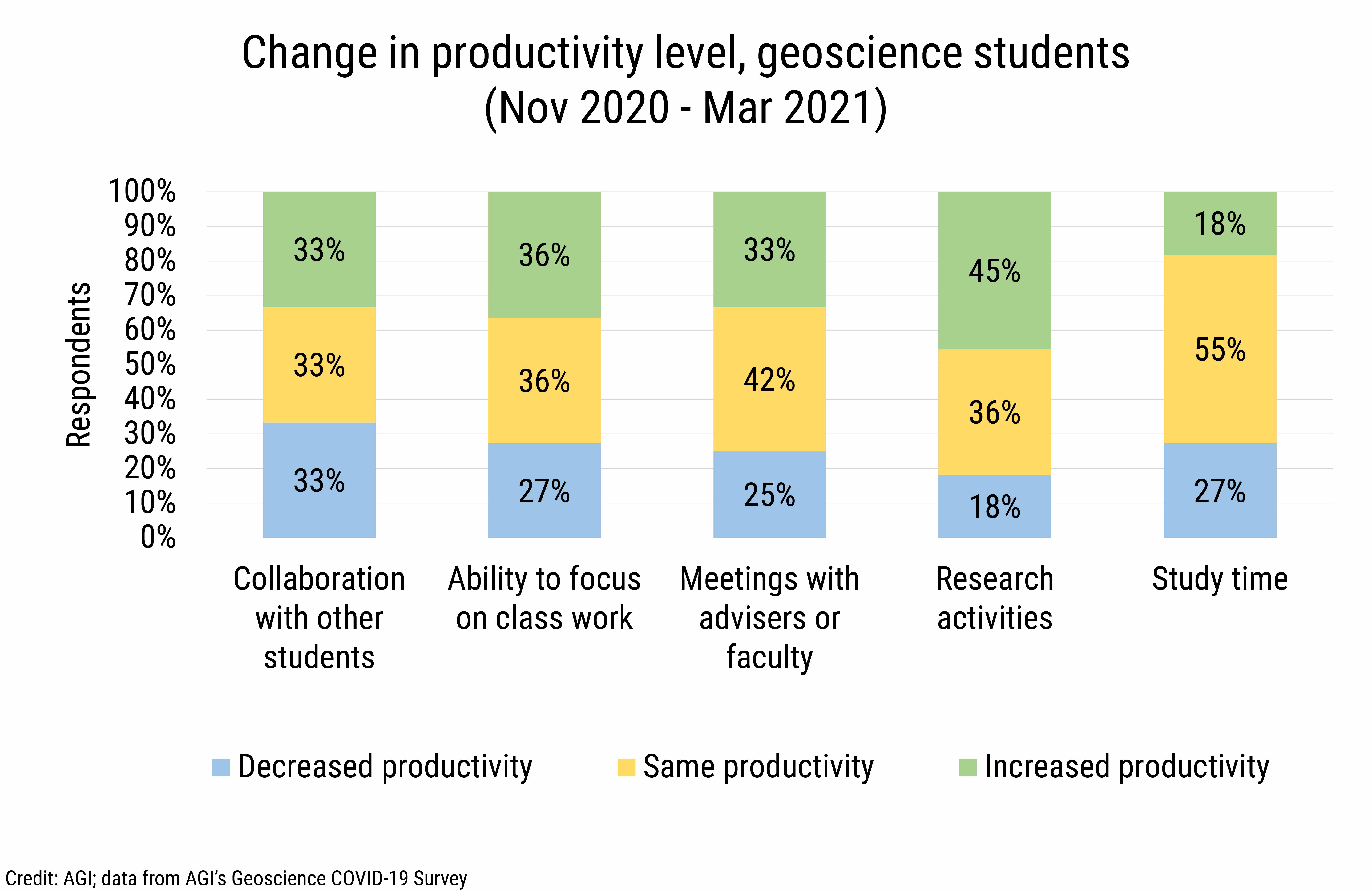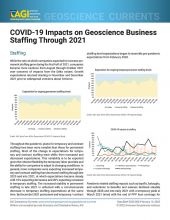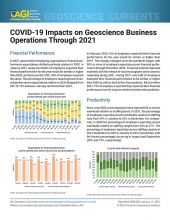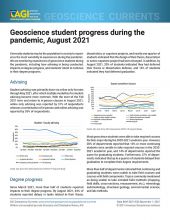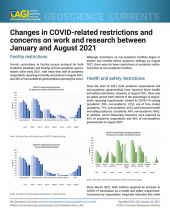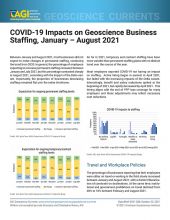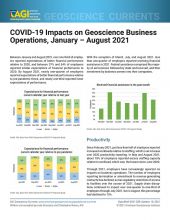This data brief provides updated data from AGI's Geoscience COVID-19 Impacts survey about the adaptations that faculty and students have implemented in response to teaching and learning from home, productivity levels of faculty and students, and the benefits and challenges related to teaching and learning from home.
Adaptations for remote working and learning
Since November 2020, more students are using a dedicated workspace (from 54% to 74%), upgrading their internet connectivity (from 19% to 33%), obtaining additional software applications (from 44% to 56%), and having additional school-related supplies in their home study area (11% to 33%). More students than faculty, however, use shared workspaces for their remote learning, despite this being one of the key challenges previously mentioned by participants that impacted productivity. Additionally, more faculty than students reported having new hardware (i.e., computers, monitors, printers, etc.) in their home workspaces.
Faculty productivity
Since November 2020, more faculty reported being moderately to extremely productive with teaching activities (from 72% to 82%), the ability to focus on work activities (from 68% to 70%), and with meetings (from 47% to 52%). Similar to November 2020, in March 2021, faculty reported being least productive with collaboration with colleagues and research activities.
For those faculty providing survey feedback in November 2020 and March 2021, 47% reported an increase in productivity levels related to meetings, and nearly one-third reported increased productivity related to being able to focus on work activities, conducting teaching and research activities, and collaborating with colleagues. While most faculty reported either the same or increased productivity across all categories, 28% reported decreased productivity with collaboration, and one-quarter reported decreased productivity related to meetings.
When asked about needing to be physically present at the office, faculty responses were similar to November 2020 survey responses with 52% of faculty reporting their physical presence was either not necessary or slightly necessary and 27% of faculty reporting that it was moderately to extremely necessary. In November 2020, 54% of faculty reported that they were either not needed or only slightly needed in the office, and one-quarter of faculty reported that it was moderately to extremely necessary for them to be in the office.
Student productivity
Since November 2020, fewer students report being moderately to extremely productive with learning from home. Most students (63%, up from 61% in November 2020) reported being moderately to extremely productive with adviser meetings, and 33% of students reported being moderately to extremely productive with research activities (up from 25% in November 2020).
Furthermore, 30% of students reported being moderately to extremely productive with the ability to focus on class work (down from 36% in November 2020). Students reported being least productive with study time, with 49% of students reporting being not productive or slightly productive (up from 46% in November 2020), and 42% of students reported being not productive or slightly productive with collaborating with other students on research projects (up from 39% in November 2020).
For those students providing survey feedback in November 2020 and March 2021, 45% reported an increase in productivity levels related to research activities, and 36% reported increased productivity related to being able to focus on class work. One-third of students noted increased productivity in collaborating with other students and with advising activities. While most students reported either the same or increased productivity across all categories, one-third reported decreased productivity with collaboration, 27% reported decreased productivity with focusing on class work and study time, and one-quarter reported decreased productivity related to adviser meetings.
Work and study environment challenges
The most common challenge with remote working and learning has been that home environments are not set up to facilitate effective working and learning. Participants mentioned having poor ergonomic conditions, distractions from others also working or learning from home, using shared workspaces, and encountering internet bandwidth issues related to multiple people in the household learning and working at the same time. Other common challenges mentioned by participants included the lack of interaction and engagement with students, and lack of informal discussions with colleagues, difficulty with learning and teaching virtually, especially with regards to field and lab activities that benefit from hands-on, in-person instruction, and the large amount of time required to prepare materials for multiple instructional formats (i.e., in-person, online, and hybrid formats).
Work and research benefits
Benefits related to work and research activities that were noted by participants included not having to commute to work and meetings, increased ease and efficiency with virtual meetings and collaboration, and more time for focused work as a result of less interruptions from colleagues, students, etc. Some faculty also noted how the pandemic has caused them to become much more creative in their teaching, both in using new technologies to convey concepts, and also in re-designing course content, making assignments more useful for students, and thinking through how to manage the high-cognitive load challenges in teaching and learning.
Work and research challenges
Most challenges stated by study participants centered on the impacts of COVID-19 restrictions on facility access and teaching and learning and how restrictions have resulted in tasks taking much longer than normal. Participants mentioned not being able to access lab facilities, issues with limited staffing impacting research progress, and restrictions on field activities that hampered research progress (i.e., travel restrictions, vehicle use restrictions, increased costs related to restrictions, etc.) including having to use outdated data for teaching activities and cutting field data collection from student research projects. Faculty also mentioned limited class sizes causing impacts to face-to-face time with students, lack of communication with colleagues and students, the need for increased amount of communication to check on student progress, and challenges with recruitment and planning.
We will continue to provide current snapshots on the impacts of COVID-19 on the geoscience enterprise throughout the year. For more information, and to participate in the study, please visit: www.americangeosciences.org/workforce/covid19
Funding for this project is provided by the National Science Foundation (Award #2029570). The results and interpretation of the survey are the views of the American Geosciences Institute and not those of the National Science Foundation.


